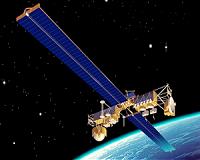 |
Moscow (UPI) Mar 24, 2011 Russia's military space forces in 2010 intensified the level of their activities. These included maintaining and strengthening the military preparedness of the military's various space units, including the unit responsible for the orbital grouping of spacecraft (KA), ground units of the military's missile attack warning forces (PRN), space surveillance (KKP) and missile defense (PRO) systems, in addition to spacecraft launch and control units. In 2010 the PRN, KKP and PRO operational forces detected and tracked more than 30 launches both of Russian and foreign space rockets and ballistic missiles, Russia's Ministry of Defense newspaper Krasnaya Zvezda reported Thursday. Last year Space Troops combat teams carried out and supported six classified spacecraft launches supporting Russian Defense Ministry interests. Ministry of Defense Space Troops also assisted in 18 launches of spacecraft designed to support of Russia's Federal Space Program Global'naia Navigatsionnaia Sputnikovaia Sistema, the Russian counterpart to the Western Global Positioning System, along with other international cooperation programs and commercial projects. Other Space Force activities included flight tests of the Soyuz-2.1a and Rokot booster rockets. In 2010 the Space Troops conducted 31 booster rocket launches, which placed 23 Russian and 20 foreign spacecraft into orbit. Twenty-four of the launches were made from Kazakhstan's Baikonur Cosmodrome, which Russia now leases, and six from Plesetsk Cosmodrome in Arkhangel Oblast on the White Sea, while a Dnepr RN was launched in Orenburg Oblast. Work is under way to upgrade the Space Troops' facilities with new ground-based spacecraft control at the Plesetsk Cosmodrome and to improve its ground-based automated spacecraft control complex. Plesetsk Cosmodrome is also being modified to house the Angara KRK space rocket complex, approved by both the Russian Federation Defense Ministry and Russia's Federal Space Agency. The Angara rocket series of space-launch vehicles is being developed by Moscow's Khrunichev State Research and Production Space Center to become the mainstay of the Russian unmanned launcher fleet as Russian officials replace several existing systems. The first launch of the Angara-1 light-class RN booster rocket is planned for no later than 2013. Further consolidating the Space Troops, in 2010 Kamchatka Pacific ocean Kura test site was transferred from the Strategic Missile Troops to the Space Troops for creating a unified organizational structure for testing missile-space technology and for uniting missile launch missions under a unified command within the Russian Federation armed forces military infrastructure. The Space Troops have also begun construction of new-generation tracking and early warning radars in Irkutsk and Kaliningrad oblasts.
Share This Article With Planet Earth
Related Links Military Space News at SpaceWar.com
 First LockMart-Built Milstar II Satellite Marks 10 Years In Service
First LockMart-Built Milstar II Satellite Marks 10 Years In ServiceSunnyvale CA (SPX) Mar 24, 2011 The first Milstar II military communications satellite, built by a Lockheed Martin team for the U.S. Air Force, has surpassed its 10-year design life of on-orbit service, providing our nation's warfighters with secure and reliable communications since its successful launch on Feb. 27, 2001. Designated Milstar II Flight-4, the satellite is the first of three Block II spacecraft on orbit tha ... read more |
|
| The content herein, unless otherwise known to be public domain, are Copyright 1995-2010 - SpaceDaily. AFP and UPI Wire Stories are copyright Agence France-Presse and United Press International. ESA Portal Reports are copyright European Space Agency. All NASA sourced material is public domain. Additional copyrights may apply in whole or part to other bona fide parties. Advertising does not imply endorsement,agreement or approval of any opinions, statements or information provided by SpaceDaily on any Web page published or hosted by SpaceDaily. Privacy Statement |